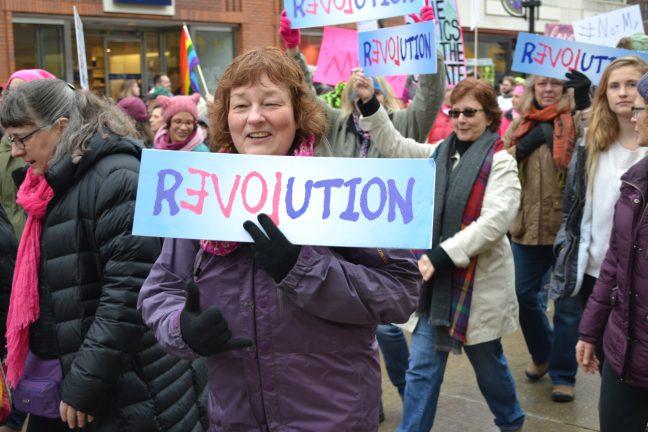Ashley Bennett had never run for political office before. At least not until her local county legislator posted a sexist meme about the upcoming Women’s March reading “Will the Women’s March protest be over in time for them to cook dinner?” alongside a photo depicting a woman stirring a meal over a stove.
Bennett, a 31-year-old, lifelong resident of Atlantic County, New Jersey, was one of many community members Republican legislator John Carman’s post enraged. When Carman refused to apologize, Bennett decided to run for office to unseat him and channel her frustration into action. Months later, Bennett emerged victorious, knocking off the incumbent Carman in a district considered a Republican stronghold.
“I never imagined I would run for office,” Bennett said.
Panel of women in STEM says problems they face in workplace can be overcome
The Women’s March, which brought in crowds that surpassed even those of President Donald Trump’s inauguration, was just the tip of the iceberg for upcoming resistance to the administration’s policies.
Energized by both Trump’s dangerous policy agenda and the political success of Hillary Clinton — the first woman nominee to a major U.S. political party and winner of the 2016 Presidential Election popular vote — a record number of women are running for political office.
All across America, women are getting their payback on an administration that seeks to dismantle their rights. A “Pink Wave” of female candidates, particularly those running for office for the first-time, is seeking offices large and small — from the U.S. Senate down to local school boards. While both parties have experienced an increase in women seeking office, the overwhelming majority of these women have been Democratic.
Protest culture essential to roots of democracy, both home, abroad
Aiding this wave of female candidates are organizations such as She Should Run and Emily’s List which aim to seek out and train women looking to run for political office. More than 26,000 women have contacted Emily’s List — an organization that assists pro-choice women to run for political office — since Trump’s election. Between 2015 and 2016, only 900 women had contacted the organization.
What does this mean for politics in America? Among other things, a heightened national dialogue around issues that are often not given the attention they deserve, like health care, women’s health, paid-family leave and universal early childhood education.
Even broader, it could hopefully represent the beginning of a tsunami of women running for office. As women start running for office and our country’s political institutions gradually transform to look more like how America actually looks and less like a country club for old, rich, white men, more young girls will likely feel inspired to run themselves one day. Representation matters. The surge of women running today is not just changing the national political dialogue of the present but is also paving the way for women of future generations. It’s showing young girls that they, too, can transform their voice into action.
Admitting racist past is America’s first step towards justice
Also encouraging? This “Pink Wave” has been particularly impactful in encouraging women of underrepresented communities to run for office. For instance, Danica Roem, a trans woman inspired to run in the aftermath of President Trump’s election, defeated the incumbent Republican candidate to attain election to Virginia’s House of Delegates. A plethora of women from other backgrounds have been inspired to seek office as well, helping bring to the spotlight a variety of issues affecting underrepresented populations such as African Americans and the LGBTQ community.
All in all, it would be easy to think that the election of Donald Trump, a man who proudly bragged about committing sexual assault, would signify the demise of women’s efforts to have their voices heard in our country’s politics. If anything, despite this administration’s efforts to scale back reproductive rights and dismantle legal abortion, many women have only amplified their voices. In this perilous moment, women across the United States have led the charge through their resistance and action.
What started as a Women’s March has transformed into a Women’s Marathon.
David Weinberg ([email protected]) is a sophomore double-majoring in Journalism and Political Science.














